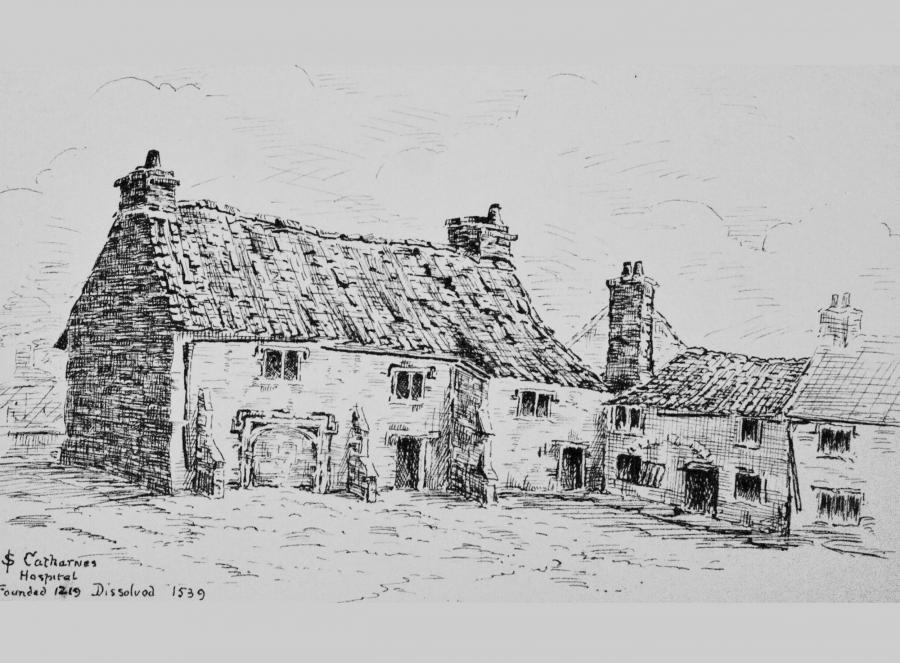Project background
In 1886, workmen began clearing the site of an old tannery in Bedminster, prior to the construction of a factory for the tobacco manufacturers WD & HO Wills. Most of the buildings they demolished were less than a century old, but one was considerably older. This building was noticed by members of the Clifton Antiquarian Club, who drew sketches and published an article identifying it as part of the medieval Hospital of St Katherine. WD & HO Wills’ Factory No. 1 was completed the following year, and the remains of the medieval hospital disappeared without trace.
This remained the case until 2016, when Wessex Archaeology carried out a trial trench evaluation, followed by a small excavation ahead of the redevelopment of the site by City and County Bedminster Ltd.
The archaeological work showed that much of the site had been heavily truncated by the foundations of the 19th-century tobacco factory, but between these areas of disturbance and 2 m below modern ground level, the walls and floors of a stone building were revealed, representing part of the lost medieval hospital.

‘St Catherine’s Hospital, Bright Bow, Bedminster’, showing the north elevation of the excavated building prior to its demolition in 1887, reproduced by kind permission of Bristol Museum and Art Gallery (ref M3012). The square-headed doorways and windows probably date from a late 16th or 17th-century remodeling of the building.
Excavation area, looking north-west
History of the site
The Hospital of St. Katherine was founded c. 1216–19 by Robert de Berkeley, 3rd feudal Baron of Berkeley. It was a small mixed community, headed by a priest who tended to the needs of infirm and needy paupers. The hospital functioned throughout the medieval period and was added to and altered during this time.
Residual pottery dating from the 12th/13th century was recovered and finds from the excavated building indicate that it was in existence from the late 13th to 15th centuries. However, documentary evidence for an enlargement of the hospital by Thomas de Berkeley in the period 1281–1321, provides the most plausible date for its construction.
Analysis of environmental remains has shown that the inhabitants of the building had a diet which included a high proportion of fish, which indicates the predominant availability of fish over meat for poorer elements of society in medieval Bristol.
Recording medieval and later walls
The Hospital of St Katherine survived the Dissolution of the Monasteries, but ceased functioning as an institution when it passed into private ownership in 1577. The building was substantially remodelled in the late 16th or 17th century; probably when it was converted into a private dwelling.
In the 18th century, parts of the former hospital were used as a glasshouse, but by 1791 this had ceased operating. At that date, the former hospital chapel was in ruins and most of the surviving ancillary buildings had been converted into tenements.
By 1809, the chapel had gone, and the last surviving hospital building had been incorporated into a tannery, variously known as the Bright Bow, Rake’s and Bedminster Tannery. Remains associated with this phase of activity included stone walls, a fireplace and a stone-lined cesspit or water cistern.
Nineteenth-century cesspit or cistern within Bedminster Tannery
Results
The full results of the archaeological work will be published in a forthcoming article in the Proceedings of the Bristol and Gloucestershire Archaeological Society.



